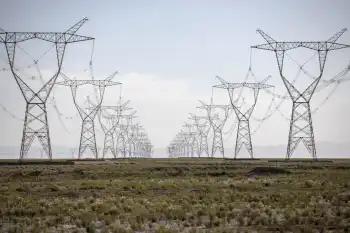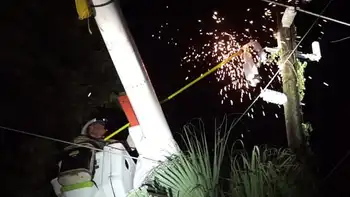New England Power Supply OK But Needs Transmission Fix
NEW YORK - -- While New England has seen healthy gains in power supply since deregulating its market in 1999, record heat two weeks ago highlighted the need to upgrade the six-state transmission system to get power to where it's most needed.
"Since the ISO began operating the grid, enough power plants have been built to meet the region's growing needs. Now we need to fix the transmission constraints. That will reduce costs for all New Englanders," said Craig Kazin, spokesman for the region's grid operator, ISO New England. Unlike California, where the power supply did not keep up with demand, New England has more than enough generation.
Since 1999, 12 new power plants totaling 3,500 megawatts (MW) were built in New England. And there are 12 more plants being built in the region that will add another 6,000 MW in the next 2-3 years.
"We are very pleased in the level of interest of new power plant development in New England," Kazin said. One megawatt powers about 1,000 homes.
But despite gains in generation, the transmission system has not kept up, creating bottlenecks that block the movement of power into some areas.
The brutal six-day heat wave two weeks ago exposed some serious transmission constraints that made it difficult for the grid operator to keep the lights on for some of the region's 6.5 million customers.
Those constraints, moreover, have increased overall electricity costs for all New Englanders.
In an effort to fix the constraints, ISO New England said it will hold a meeting on September 6 in Marlborough, Massachusetts, to discuss several market-oriented solutions.
TRANSMISSION BOTTLENECKS In a competitive market, to keep power costs low, grid operators match the cheapest, most efficient plants with customers' daily electricity needs. Transmission bottlenecks cause power prices to rise, when the grid operator cannot move power from the cheapest plants to where it is needed most. Those increased costs are born by all transmission companies who in turn transfer those costs to rate payers.
There are two kinds of bottlenecks.
A "bottleneck in generation" is where more generation is available in a region than needed by the local population. Two regions where most of the new power plants have been built have a bottleneck in generation -- Maine and southeastern Massachusetts and Rhode Island.
The second type of bottleneck is called a "load pocket" where demand far exceeds generation, making a region dependent on the transmission grid for power.
There are two load pockets in New England -- the Boston area and southwestern Connecticut.
Vermont and New Hampshire have not had the same transmission constraints as the more heavily populated parts of the region.
BOTTLENECK SOLUTIONS There are three ways to fix a bottleneck with the most likely solution being a combination of the three, according to ISO New England. First, generating companies can build more generation in the heavily populated load pockets.
Second, transmission companies can build more power lines connecting the regions with too much generation to the areas with a load pocket. And third, the areas with a load pocket can find ways to better manage their power usage, especially on the hottest or coldest days when demand is high and supplies are tight.
During the heat wave, the grid operator asked companies and residents in the load pockets to cut electricity use, while some plants in Maine ran at half power because there was no way to move energy from Maine into more densely populated areas.
The transmission constraints, however, are improving.
In the first year after ISO New England took over the grid in 1999, transmission constraints cost the rate payers about $100 million. Since then, congestion costs are between $60 million and $100 million.
"This is not just a transmission problem. It will most likely be solved through a combination of new transmission lines, more power plants, including alternative power sources -- fuel cells, wind farms and solar panels -- and demand side (energy conservation) programs," Kazin said.
"The market will decide how best to solve the bottlenecks and which companies will profit from putting those solutions in place," Kazin said.
Related News

Canada's Ambitious Electric Vehicle Goals
OTTAWA - Canada has set its sights on a bold and transformative goal: to ban the sale of new gasoline-powered passenger cars and light-duty trucks by the year 2035. This ambitious target, announced by the federal government, underscores Canada's commitment to combating climate change and accelerating the adoption of electric vehicles (EVs) nationwide.
The Federal Initiative
Under the leadership of Prime Minister Justin Trudeau, Canada aims to significantly reduce greenhouse gas emissions from the transportation sector, which accounts for a substantial portion of the country's carbon footprint. The initiative aligns with Canada's broader climate objectives, including achieving net-zero emissions by…




